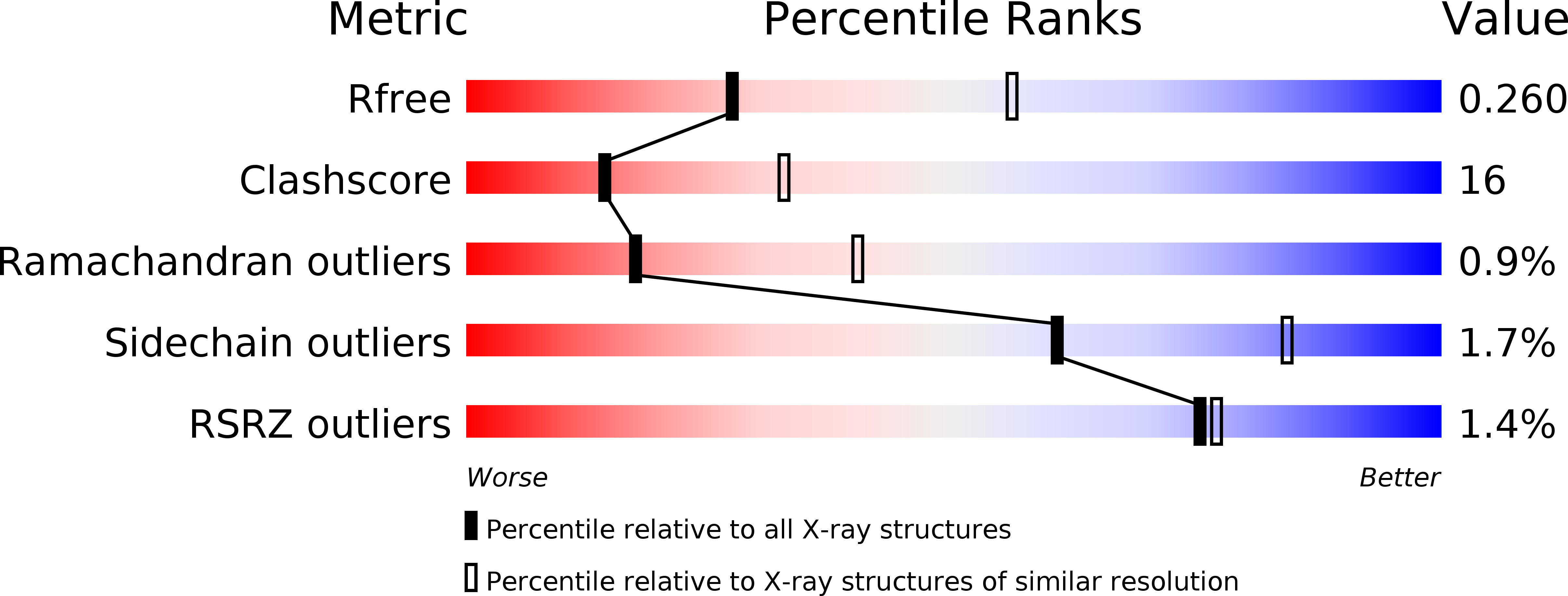The Enzymatic and Structural Basis for Inhibition of Echinococcus granulosus Thioredoxin Glutathione Reductase by Gold(I).
Salinas, G., Gao, W., Wang, Y., Bonilla, M., Yu, L., Novikov, A., Virginio, V.G., Ferreira, H.B., Vieites, M., Gladyshev, V.N., Gambino, D., Dai, S.(2017) Antioxid Redox Signal 27: 1491-1504
- PubMed: 28463568
- DOI: https://doi.org/10.1089/ars.2016.6816
- Primary Citation of Related Structures:
5W1J, 5W1L - PubMed Abstract:
New drugs are needed to treat flatworm infections that cause severe human diseases such as schistosomiasis. The unique flatworm enzyme thioredoxin glutathione reductase (TGR), structurally different from the human enzyme, is a key drug target. Structural studies of the flatworm Echinococcus granulosus TGR, free and complexed with Au I -MPO, a novel gold inhibitor, together with inhibition assays were performed. Au I -MPO is a potent TGR inhibitor that achieves 75% inhibition at a 1:1 TGR:Au ratio and efficiently kills E. granulosus in vitro. The structures revealed salient insights: (i) unique monomer-monomer interactions, (ii) distinct binding sites for thioredoxin and the glutaredoxin (Grx) domain, (iii) a single glutathione disulfide reduction site in the Grx domain, (iv) rotation of the Grx domain toward the Sec-containing redox active site, and (v) a single gold atom bound to Cys 519 and Cys 573 in the Au I -TGR complex. Structural modeling suggests that these residues are involved in the stabilization of the Sec-containing C-terminus. Consistently, Cys→Ser mutations in these residues decreased TGR activities. Mass spectroscopy confirmed these cysteines are the primary binding site. The identification of a primary site for gold binding and the structural model provide a basis for gold compound optimization through scaffold adjustments. The structural study revealed that TGR functions are achieved not only through a mobile Sec-containing redox center but also by rotation of the Grx domain and distinct binding sites for Grx domain and thioredoxin. The conserved Cys 519 and Cys 573 residues targeted by gold assist catalysis through stabilization of the Sec-containing redox center. Antioxid. Redox Signal. 27, 1491-1504.
Organizational Affiliation:
1 Worm Biology Lab, Institut Pasteur de Montevideo , Montevideo, Uruguay .















